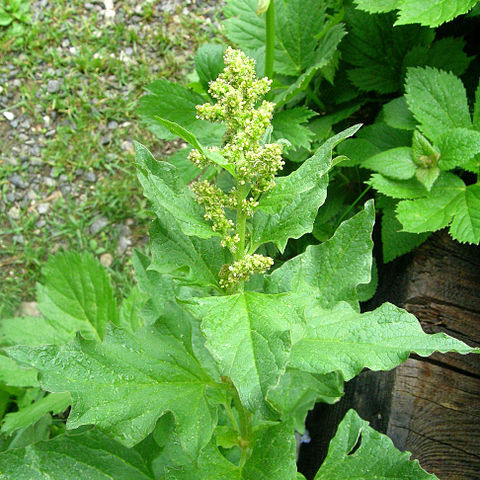Erect or ascending, thick-rooted perennial to 7 dm; lvs numerous, long-petioled, broadly triangular-hastate, to 12 cm, entire or undulate; fls in small glomerules aggregated into a terminal, branching, paniculiform infl; sep mostly 4 or 5, erose; styles 2(3), persistent and conspicuous, 1–1.5 mm in fr; seeds all or mostly erect, black, shining, lenticular with a raised margin, 1.5–2 mm wide; 2n=36. Native of Europe, occasionally found as a weed in our range.
A perennial plant. It grows up to 60-100 cm tall. It spreads to 60 cm wide. The roots are fleshy and thick. The stem is hollow. It has triangular shaped leaves. They are deep green. They are 10 cm long. The flower spikes do not have leaflets. The flowers are greenish in spikes at the top of the plant. The seeds are rust coloured.

